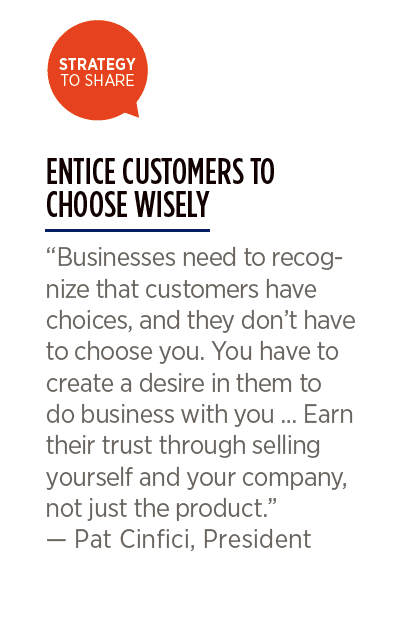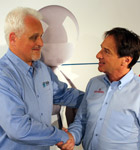
Backed by a novel idea and only three employees, the owners of Boscov’s Department Stores decided to launch a travel business. The result was Boscov’s Travel, a full-service travel-management company whose first branch opened in Reading, Pennsylvania, in 1974. Now, more than 37 years later, the company remains one of the most successful travel-management providers in the Mid-Atlantic. President Pat Cinfici and vice president Janet Papilla, who have been with the company a combined total of 72 years, share the secrets of the company’s success despite industry challenges that crippled many of its competitors.
How did a department store evolve to include a travel business?
Cinfici: In the early 1970s, travel was considered to be accessible only to wealthy people. Boscov’s owners wanted to create a different attitude toward travel by offering affordable travel opportunities for everyone. It was a revolutionary approach, which changed the way people viewed travel.
Papilla: The company started out, right away, running full-page advertisements in local media, which was unheard of unless you were a national brand. The approach to marketing was unique, and, as a result, the company grew immediately and very fast.
What are some of the unique aspects of your business model?
Cinfici: Though under the same ownership as the department store, Boscov’s Travel is an independent travel-management company. However, our 24 branches are based within the stores themselves, so we’ve expanded along with the stores.
Papilla: Being under the same ownership as the department stores allows us access to over one million credit-card holders who have a proprietary card through Boscov’s, and access to the customers who visit and frequent the department-store locations.
Describe your current approach to marketing.
Papilla: We’ve always had a dynamic, proactive approach to marketing. In addition to our store tie-in, we’ve developed a solid print-advertising presence in 22 markets. Our other marketing initiatives include banner advertising on cable television, billboards, social media, and tie-ins with local sports teams.
Cinfici: If our phones are not ringing, then we are on them, reaching out to customers. Our industry is extremely dynamic—there are up to 44,000 air-fare changes daily—and we have to constantly stay on our toes.
Are there any services Boscov’s Travel is known for in the region?
Papilla: We were one of the very first companies to run charters to Disney World—a segment of our business that has remained popular since its launch in 1976. To keep the trips affordable, we charter 737 planes through Southwest Airlines and run flights from secondary and tertiary airports.
How has the Internet changed your business?
Cinfici: When Internet travel sites first appeared, everyone said travel agencies would disappear; however, we feel the Internet simply weeded out companies who were not strong, and the companies which remain are true specialists in the field. We actually believe the Internet has made us better, sharper, and more focused because we are constantly striving to differentiate ourselves and ramp up our level of service.
Papilla: The Internet also has created a better-informed consumer. Many customers research using online travel sites, and then come to us to see what we can offer in comparison. Often, we are able to offer a better package because we have a lot of buying power and can create unique, tailored packages you cannot find online.
What other changes have you seen in consumers’ approach to travel?
Papilla: The biggest changes, and our most challenging time, followed 9/11. It was a sad time for our nation, and it created a lot of fear. We had to make some difficult decisions—the days following were the first and only time we’ve ever canceled a charter to Orlando. As people began to travel again, we saw more people wanting to travel together as families.
Cinfici: Certain destinations, such as Disney World, remain constant. Cruising also remains a strong option, and locales such as Alaska and Hawaii remain “bucket list” destinations. What’s new, however, are consumers who travel for enrichment experiences such as culinary trips, adventure trips, or geological trips.
















